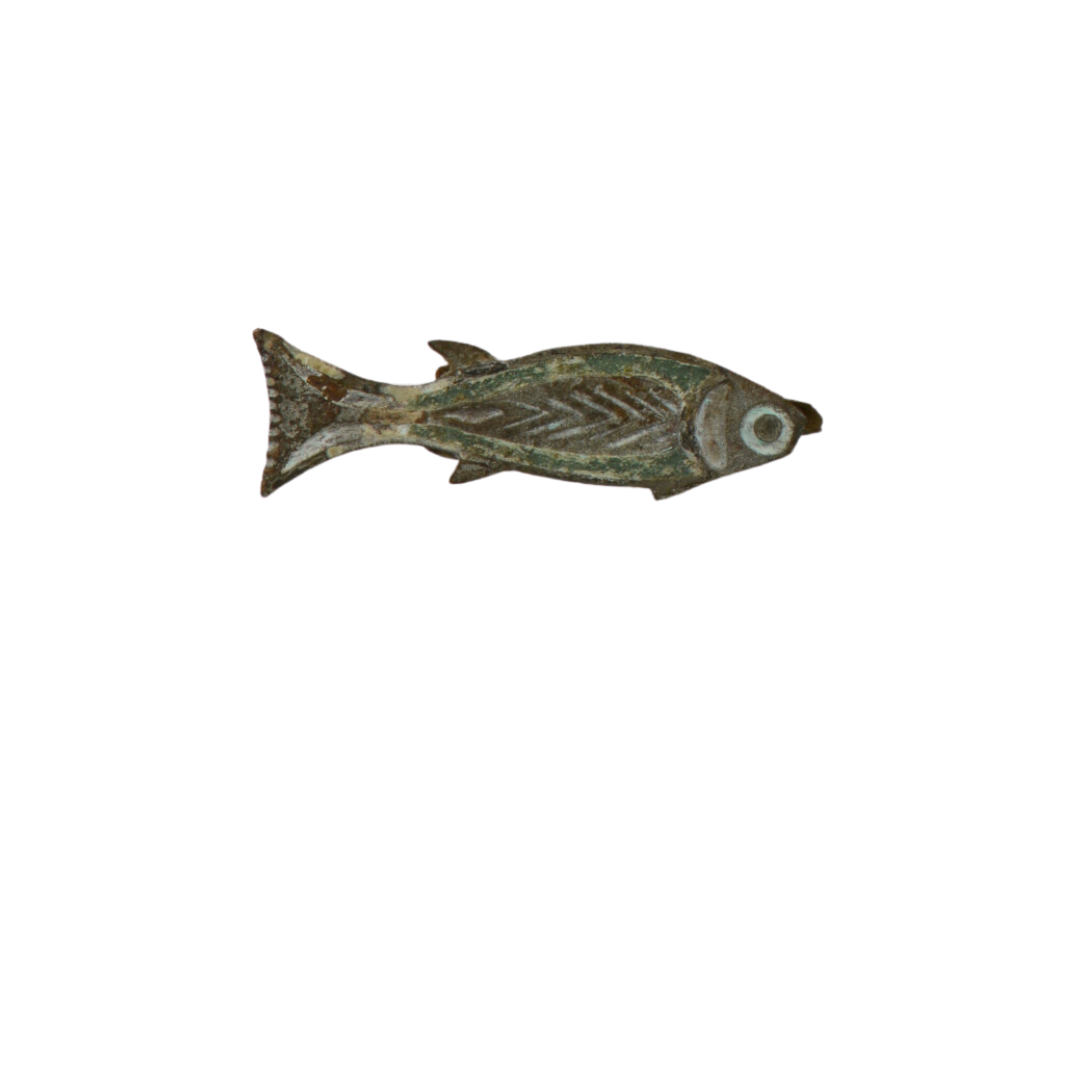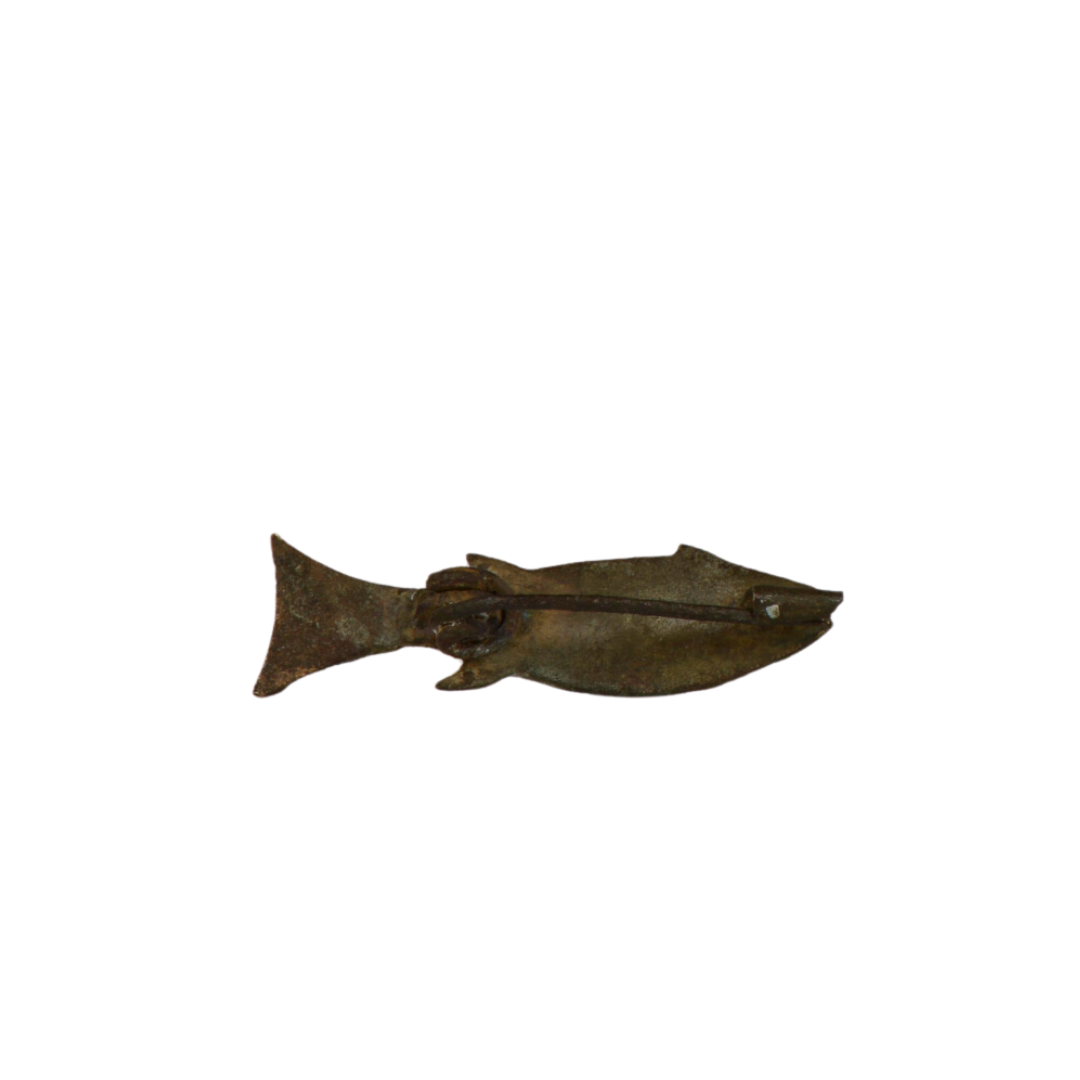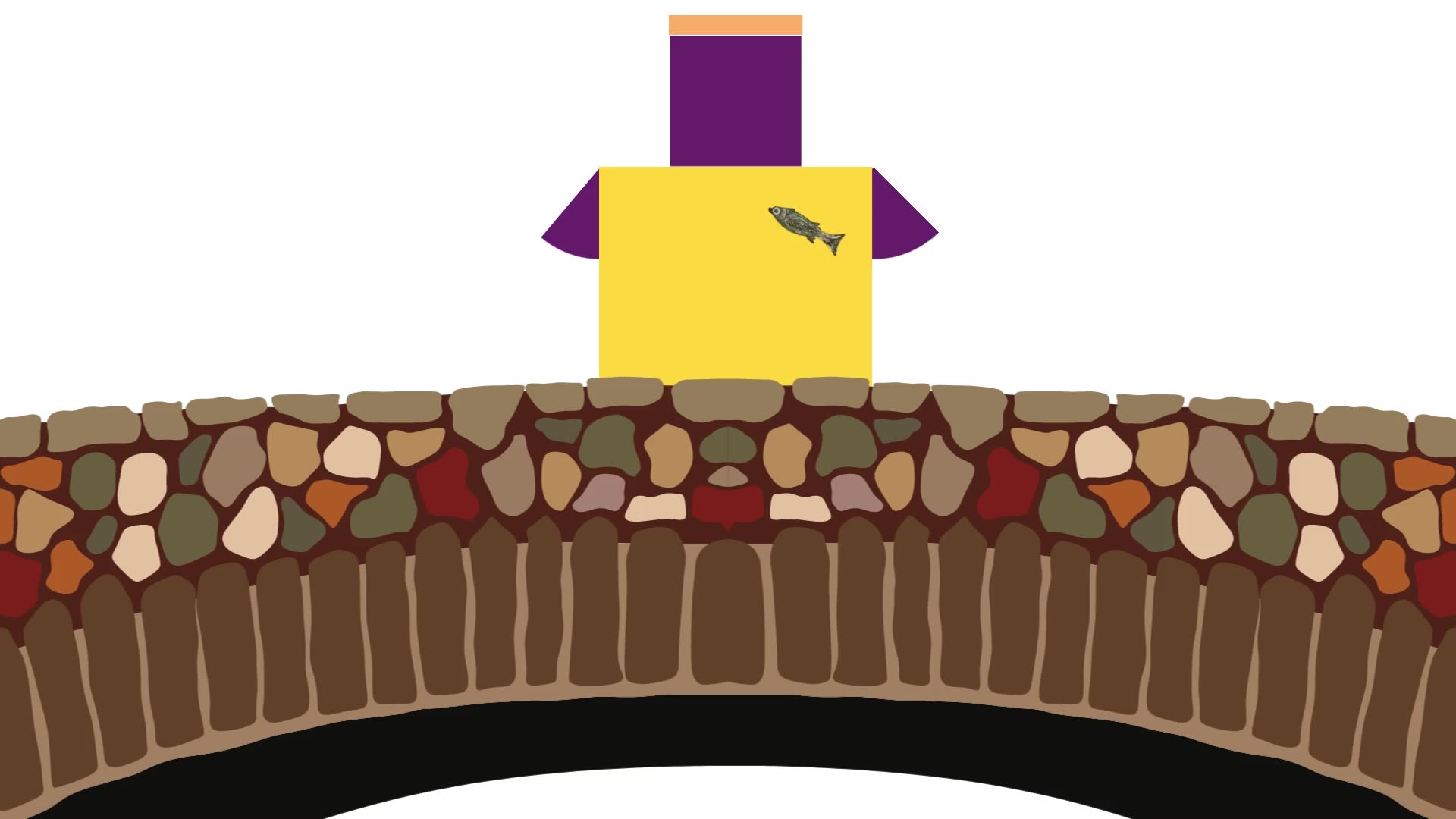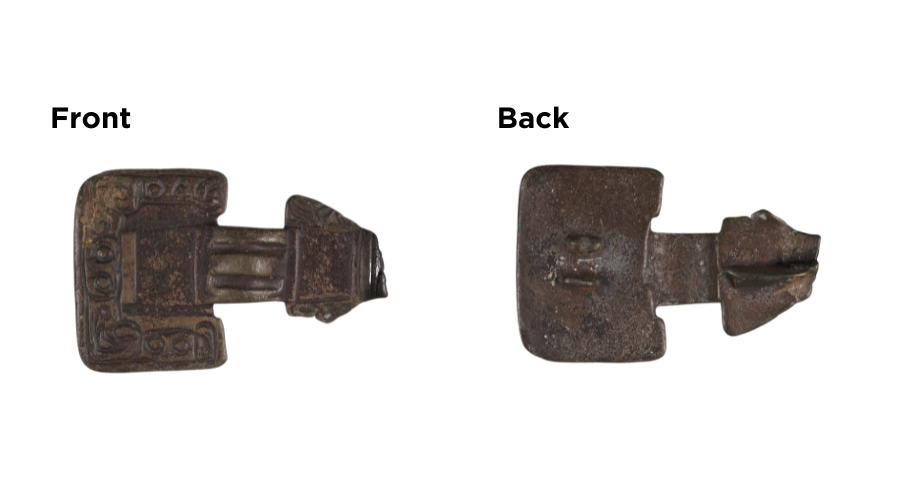
Copper-Alloy and Enamel Fish Brooch (100 - 200 AD)
Roman soldiers often wore brooches to secure their clothing, and some specific types are closely linked to the army. Piercebridge was a military site so it is not surprising that 109 brooches were found there.
Animal shaped items are often called ‘zoomorphic’. Zoomorphic brooches like this fish have also been found at temples and ritual places.
Archaeologists think they might have been souvenirs from sacred places dedicated to a god or goddess. This tells us why someone in the Roman period may have put this brooch in the river as an offering.



Anglo-Saxon Brooches (500 - 600 AD)
These Anglo-Saxon brooch fragments were found in the River Tees at Piercebridge. They are from cross-shaped brooches and might have come from the same brooch.

They may have accidentally washed into the river from a burial. There are many Anglo-Saxon burial sites in County Durham, such as those in Norton-on-Tees, Darlington and Easington. Anglo-Saxon people were buried with things they might need in the afterlife, so someone must have thought it was important that this person had their brooch.


